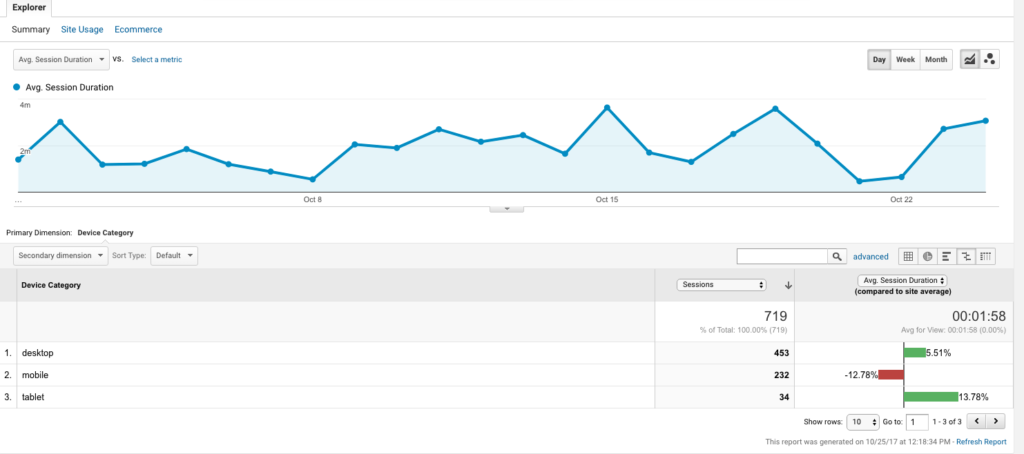Reviewing website analytics can be difficult and time-consuming for many small and mid-sized organizations. The process is sponge-like; you can pour endless time and energy into it and soak up valuable information. However, all organizations are short on resources and time.
Below are four questions to focus on:
Are your most important pages getting the most views?
You should be able to identify the pages on your website that you want the most traffic going to. What are the five most important pages? Are they the five pages on your site that receive the most traffic?
Evaluating this information can help you identify pages that may be underperforming and help you diagnose what the issue is. Is the page’s location in your menu not ideal? Does it have some issues on mobile platforms? Is there too much text or too many images? Evaluating traffic will also help you find pages that are outperforming where they should be. This data is helpful in learning lessons from those pages or evaluating what content is driving traffic to your site.

How does the average length of visit change by device?
Mobile and tablet users are likely going to spend less time on your site. However, you should review how significant the difference in these rates to determine if you have issues with your mobile and tablet responsiveness.
If you go into Audience –> Mobile –> Overview and select Avg. Session Duration you can view this data. There is also an option to toggle to a comparison screen in which Google will compare this data to the site average. Below is a screenshot of what this looks like:

If your mobile and tablet numbers are positive, you’re doing something right. Congratulations! If they are drastically low, you should review the navigation and how individuals move through content on the page. Is the text readable? How adaptive is the page if you change orientation? How does page content look in different browsers?
How are people reaching your website?
This seems like a fundamental question, but something to that can be time-consuming to process and think through. We’re going to address search traffic in the question below. Direct traffic captures people who typed in the address, used bookmarks, or the path is unknown/untrackable. Referral traffic and social traffic is an excellent way to evaluate a few common issues that come up.
Referral traffic can help highlight the websites that are driving traffic to your site. This is helpful for CRM purposes. If a community partner you work with drives a lot of traffic to your site, it may be beneficial to highlight them in other communication, so you can maintain a good relationship with the partner. This can also be helpful in finding sites that are sharing information about your organization that you are unfamiliar with. If a blog aimed at parents is driving new traffic, make sure you see what they wrote and, if appropriate, connect with them.
Social traffic is a great way to measure outcomes from your social media communication. Do you see much higher rates of traffic from a specific platform? What is the traffic to follower ratio for each platform? This information can be helpful in determining where to invest limited time/resources and where you may need to take a step-back and think about strategy. If your organization is active on Facebook, has 5,000 fans, and you only get 15 users from Facebook per month, you need to review strategy and try new things.
What are the search terms people are using to get to your site?
Search terms are a great way to identify how folks are finding your site. This information can be hard to see for some organizations. If the majority of your viewers don’t allow the information to be tracked, then you’ll get a lot of “(not provided)” in your data set.
For organizations that have info to cull, they are often surprised what some of those items are. It provides an opportunity to revise content or place some keywords/phrases in more prominent positions on the site (headlines or first paragraph).
If there are search terms, you’re not expecting you may be able to create new content catered towards those terms. For example, one organization we work with found that a minor term came up frequently in search terms. It was mentioned on a page about trainings for educators. After noticing this, they wrote a blog post that was an introduction to that term, what it means, and how people can put it into practice in their day-to-day work. This was a very popular blog post and continues to drives a lot of new traffic to their site. Before evaluating their analytics, they did not recognize that this was a topic that individuals had a lot of interest in.
Do you have more questions? Let us know. We’ve worked with a variety of nonprofit organizations on taking analytics data and suggesting simple changes that organizations can make to find new supporters and better engage existing supporters.

Justin (he, him) is a Principal and Co-Founder of Social Change Consulting. He has over fifteen years of nonprofit experience, with expertise in online fundraising, digital communications, and data management. Justin helps organizations connect their communication strategy to their income development needs. When he’s not on the clock, Justin is exploring Berlin, running, listening to too many podcasts, and drinking too much coffee.
